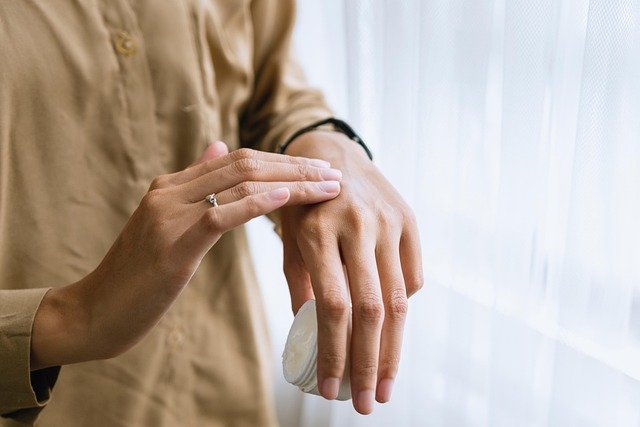Scalp exfoliation methods and safety considerations
Scalp exfoliation can improve flaking, product buildup, and overall scalp condition when done correctly. This article outlines methods, ingredient considerations, and safety measures to protect barrier function and microbiome balance while supporting hydration and hair health.

Scalp exfoliation can be a useful part of a hair-care routine when the goal is to remove dead skin, excess oil, and residue from styling products. Done thoughtfully, it can reduce visible flakes and make cleansers and moisturizers more effective. However, the scalp differs from facial skin in thickness, hair density, and sensitivity, so methods and frequency should be matched to individual needs, existing conditions, and product ingredients.
This article is for informational purposes only and should not be considered medical advice. Please consult a qualified healthcare professional for personalized guidance and treatment.
How does exfoliation affect barrier and microbiome?
Exfoliation targets dead surface cells and buildup that can interfere with the scalp’s barrier and microbial balance. Mechanical scrubs and chemical exfoliants remove layers from the skin surface; if overused, they can strip natural lipids and disturb the microbiome, increasing sensitivity or irritation. Preserving barrier lipids—such as ceramides—and avoiding aggressive daily exfoliation helps maintain hydration and protects complexion where the hairline meets facial skin. Aim for a measured plan that supports microbial diversity rather than eliminating it.
What methods of scalp exfoliation are available?
Common methods include mechanical exfoliation with gentle brushes or granulated scrubs, and chemical exfoliation using low-concentration alpha hydroxy acids (AHAs), beta hydroxy acids (BHAs), or enzyme-based products. Mechanical options provide immediate physical removal of flakes and product residue, while chemical options can dissolve sebum and dead cells more evenly. Professional in-office treatments are available through local services for more intensive needs, but home routines should start mild and gradually increase frequency based on tolerance and results.
How do pH, ceramides, and niacinamide help scalp health?
Scalp pH influences microbial balance and barrier function; most healthy scalps sit slightly acidic. Formulations that respect natural pH reduce disruption. Ceramides support the barrier by replenishing lipids lost through cleansing or exfoliation, and niacinamide can improve barrier resilience and reduce sensitivity. When choosing products, look for serums or leave-on treatments with these ingredients to restore hydration after exfoliation rather than relying solely on occlusives or heavy oils, which may trap residue.
What role do sulfates and silicones play in hair care?
Sulfates are cleansing surfactants effective at removing oils and buildup but can be drying and strip barrier lipids if used excessively. Silicones provide slip and temporary shine but can accumulate on the scalp and hair, creating the very residue exfoliation seeks to clear. Balancing surfactant strength and avoiding unnecessary silicone-heavy formulations can reduce the need for frequent exfoliation. If buildup is a concern, alternating gentle sulfate-free cleansers with targeted exfoliation can help maintain hydration and manage residue.
How should moisturizers and hydration be balanced?
After exfoliation, restoring hydration is essential. Lightweight moisturizers and humectants help draw water into the skin, while ceramide-containing treatments support barrier repair. Avoid heavy occlusive products immediately after exfoliation if you are prone to buildup; instead, apply water-based moisturizers or leave-on serums with niacinamide to support barrier recovery. Hydration strategies should consider hair type—oily scalps may need lighter formulations—while ensuring the surrounding complexion and hairline receive appropriate moisturizing care.
How to manage sensitivity and consider sustainability?
People with sensitive scalps should prioritize low-frequency, low-strength exfoliation and patch-test new products. Reduce friction from mechanical tools and choose enzyme or low-percentage chemical options that are formulated for sensitive skin. For sustainability, opt for products with biodegradable exfoliating particles and minimal unnecessary packaging, and avoid single-use exfoliating devices when reusable tools suffice. Consider the life cycle of ingredients like silicones and synthetic polymers when selecting products to align scalp care with broader environmental goals.
Scalp exfoliation can be a helpful component of scalp and hair maintenance when it supports barrier function, respects pH, and protects the microbiome. Select methods and products that match your sensitivity and hydration needs, and prioritize formulations that rebuild lipids—such as ceramides and niacinamide—after exfoliation. When in doubt, consult a dermatologist or a qualified professional at local services to tailor an approach that balances efficacy, safety, and sustainability.





